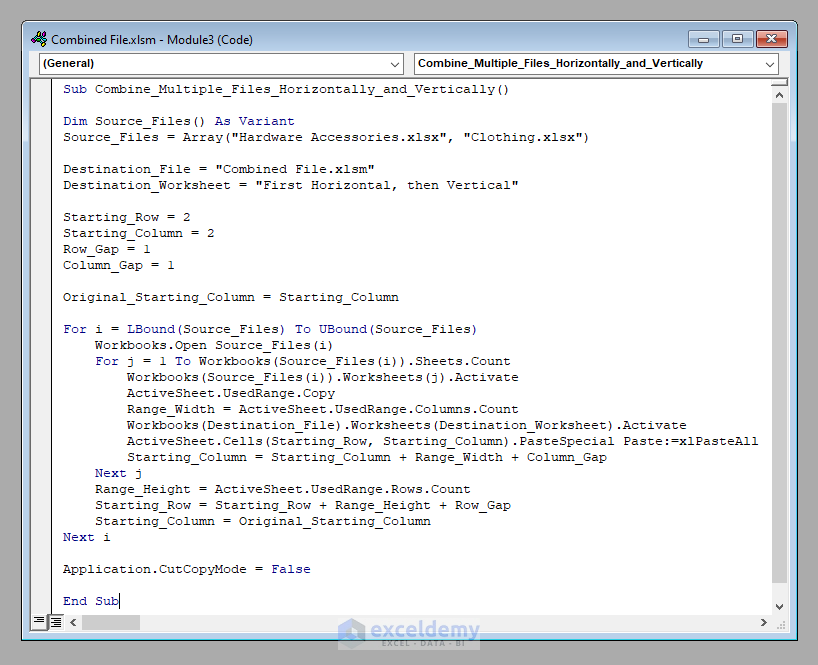5 Ways to Merge Excel Sheets into OneWorkbook

Understanding the Need for Merging Excel Sheets

In the world of data management, efficiency and organization are paramount. Professionals often find themselves managing multiple Excel sheets containing related data, which can be cumbersome to handle separately. Merging these sheets into one Workbook can significantly streamline processes like reporting, analysis, and data comparison. This blog post delves into five practical methods to merge Excel sheets, ensuring you have a robust understanding of how to combine your data effectively.
Method 1: Using Excel’s Built-In Consolidate Feature

Excel’s Consolidate feature allows users to combine data from several sheets into one summarized sheet. Here’s how you can do it:
- Select Data: Open the worksheet where you want to consolidate data.
- Access Consolidate: Navigate to Data > Consolidate.
- Choose Function: Select the function you wish to apply (Sum, Average, etc.).
- References: Add references to the ranges from different sheets you want to consolidate.
- Labels: Use options like Top row or Left column if your data has labels.
- Create Links to Source Data: Tick this if you want to update automatically when changes occur in the source sheets.
- Click OK: Excel will consolidate your data as specified.
🔍 Note: This method is best for aggregating data using formulas like sum or average, not for raw data merging.
Method 2: Power Query for Merging

Power Query is a powerful tool within Excel for transforming and combining data from multiple sources. Here’s how to leverage it:
- Import Data: Go to Data > Get Data > From Other Sources > From Microsoft Query or Get Data > From File > From Workbook.
- Navigate to Sheets: Select the workbook containing your sheets.
- Append Queries: Use the Append Queries option to combine data from multiple sheets.
- Merge or Append: Depending on the similarity of data, you can either merge or append.
- Load Data: After transforming, click Close & Load to load the combined data into Excel.
Method 3: Using VBA Macros

Visual Basic for Applications (VBA) can automate the merging of sheets, especially useful for repetitive tasks or complex merging scenarios. Here’s a basic VBA script to merge sheets:
| Step | Action |
|---|---|
| 1 | Open VBA by pressing Alt + F11 |
| 2 | Insert a new module |
| 3 | Paste the following code: |

💡 Note: Replace 'Sheet1', 'Sheet2', 'Sheet3' with the names of your actual sheets.
Sub MergeSheets()
Dim ws As Worksheet
Dim dataWs As Worksheet
Dim lastRow As Long
Dim lastColumn As Long
Dim shName As Variant
' Create a new sheet for merged data
Set dataWs = Sheets.Add
dataWs.Name = "MergedData"
' Loop through each sheet except the merged one
For Each shName In Array("Sheet1", "Sheet2", "Sheet3")
Set ws = ThisWorkbook.Sheets(shName)
lastRow = ws.Cells(ws.Rows.Count, "A").End(xlUp).Row
lastColumn = ws.Cells(1, ws.Columns.Count).End(xlToLeft).Column
' Copy data from sheet to merged sheet
With ws
.Range(.Cells(2, 1), .Cells(lastRow, lastColumn)).Copy Destination:=dataWs.Cells(dataWs.Rows.Count, 1).End(xlUp).Offset(1, 0)
End With
Next shName
End Sub
Method 4: Manual Copy-Paste with Formatting

For simpler merging needs, copying and pasting data directly can work well:
- Create New Sheet: Start by adding a new sheet for your merged data.
- Copy Data: Go to each sheet, select the data, and copy.
- Paste Data: In the new sheet, paste the data one after the other.
- Formatting: Format as needed to ensure readability.
⚠️ Note: This method can be time-consuming and error-prone for large datasets.
Method 5: Using Third-Party Tools

There are numerous third-party tools designed to assist with merging Excel sheets:
- Excel Add-Ins: Tools like Combine Worksheets for Excel.
- Online Services: Platforms like MergeExcel.net or ExcelCompare.com.
- Software Solutions: Dedicated software like Ablebits Merge Tables Wizard.
🔧 Note: These tools often provide additional features like data cleansing or conditional merging.
Merging Excel sheets into one workbook is a pivotal task in data management. Each method discussed offers unique advantages:
- Consolidate Feature: Great for summary data aggregation.
- Power Query: Ideal for complex data transformations and merging from various sources.
- VBA Macros: Perfect for automation of repetitive merging tasks.
- Manual Copy-Paste: Best for simple, one-off data merging with direct control over formatting.
- Third-Party Tools: Provides advanced features for extensive merging operations.
By understanding and applying these methods, you can enhance your data management practices, ensuring your reports are more cohesive, analysis is more thorough, and your work process becomes more efficient. Remember, the choice of method should be based on the complexity of your data, the frequency of merging tasks, and your comfort level with Excel's functionalities.
What is the best method for merging Excel sheets?

+
The best method depends on your needs. For simple data, manual copy-paste or the Consolidate feature might suffice. For complex or frequent merging, consider Power Query or VBA Macros.
Can I automate the merging process with Excel?

+
Yes, using VBA Macros, you can automate the process of merging sheets, making it repeatable and efficient for ongoing tasks.
Are there any risks associated with third-party merging tools?

+
Yes, using third-party tools can come with risks like potential data breaches, compatibility issues, or loss of data integrity if not used properly.
How does the Consolidate feature differ from Power Query?

+
Consolidate is more straightforward for aggregating summary data, while Power Query offers more data transformation options and can handle merging from various sources beyond Excel.
Can merging sheets affect Excel performance?

+
Yes, especially with large datasets or complex merging operations, Excel might become slower due to increased processing demands.



